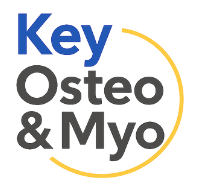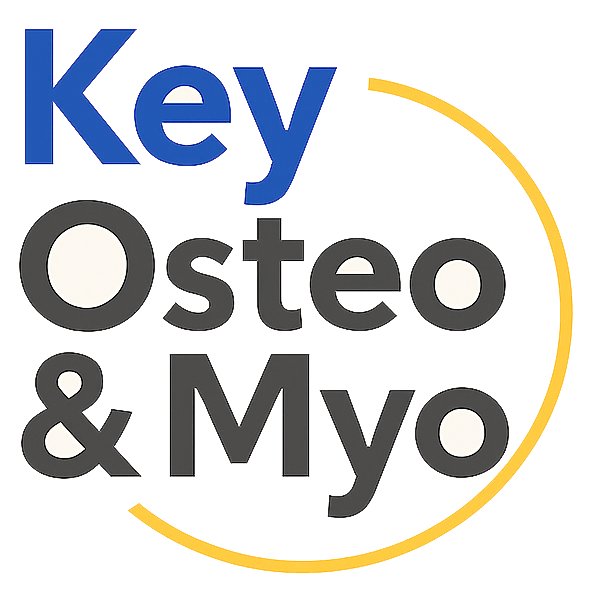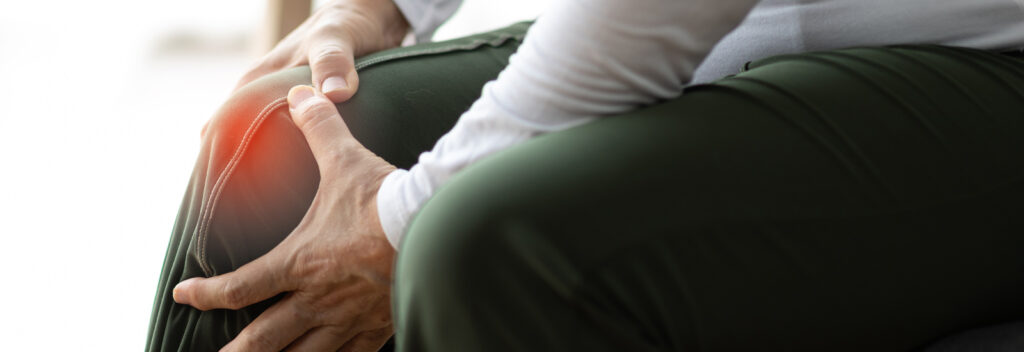
Ehlers-Danlos Syndrome (EDS) is a group of inherited connective tissue disorders that affect the way collagen is produced and functions in the body. Collagen is the most abundant structural protein, responsible for providing strength and elasticity to skin, ligaments, tendons, joints, blood vessels, and internal organs. When collagen is altered, tissues become more fragile and hyper-flexible, which explains why patients often present with joint hypermobility, musculoskeletal pain, recurrent dislocations, chronic fatigue, fragile skin, easy bruising, and even cardiovascular or gastrointestinal complications.
Although considered a rare genetic disorder, EDS is increasingly recognised as part of a spectrum that includes hypermobility spectrum disorder (HSD). Many people with severe hypermobility symptoms may not meet the strict diagnostic criteria for EDS but still experience significant instability, pain, and secondary health issues that require ongoing management.


Ehlers-Danlos Syndrome refers to a collection of thirteen recognised subtypes of connective tissue disorders, classified internationally in 2017. These subtypes vary from the relatively common hypermobile EDS (hEDS) to rarer but more serious types such as vascular EDS. What unites them is a defect in collagen formation, structure, or processing, which leaves tissues unusually stretchy, weak, or fragile.
I specifically booked in with Anna as she came highly recommended by a friend. I have been visiting physios, chiropractors and osteopaths for years with no real success. The problem… read more I had wasn’t complex, but I also suffer with a rare syndrome which means fixing that simple problem made it slightly complex!! I was pleasantly surprised when Anna was aware of my syndrome and knew all about it! No one else I had been to knew anything about it! The treatment she gave me was so relevant and was in line with my syndrome, which meant I saw immediate results when I stuck to the exercises. I genuinely feel like Anna really listened to what I had to say when so many others hadn’t. She is so knowledgeable, approachable, helpful and thoughtful I wouldn’t go anywhere else and would 100% recommend visiting. On a side note, her studio is so spacious and clean, it always is a pleasure to attend.
I was seen by Anna initially because I had hurt my neck so badly that I was unable to pick up my baby from the floor. In tears on the… read more phone she managed to get me an appointment that day, and she worked her magic, I could move my neck on the way out and the next day the pain had gone. Since then I have seen her regularly (my choice) as she is so fantastic. Very professional, gentle and lovely. Thank you so much!

Ehlers-Danlos Syndrome sits within the wider group of heritable connective tissue disorders, conditions that affect proteins such as collagen, elastin, and fibrillin. When these proteins are altered, tissues lose the normal balance of strength and elasticity, which explains the hallmark features of joint hypermobility, skin fragility, poor wound healing, and musculoskeletal pain.
Not every patient with symptomatic hypermobility will meet the diagnostic criteria for EDS. This is where the concept of Hypermobility Spectrum Disorder (HSD) is important. HSD describes patients with chronic musculoskeletal pain, instability, and fatigue caused by joint hypermobility, but without enough diagnostic markers to be formally classified as EDS. Clinically, however, the management of HSD often mirrors EDS: rehabilitation strategies, postural training, proprioceptive re-education, and long-term musculoskeletal support.
Recognising this overlap ensures that patients are not dismissed simply because they do not fit the exact genetic or clinical definition of EDS. Whether a diagnosis is EDS or HSD, the functional impact can be very real, and effective care should always be centred on the individual’s needs rather than the label alone.

This is the most common type. People with hEDS usually have very flexible joints that can move beyond the normal range. While this might sound like an advantage, it often leads to repeated sprains, dislocations, chronic pain, and muscle fatigue. It is also closely linked with hypermobility spectrum disorder (HSD), so many patients experience very similar symptoms even without a confirmed EDS diagnosis.
In addition to joint hypermobility, people with this type tend to have soft, stretchy skin that bruises easily and may scar in a distinctive way.
This is one of the rarer but more serious types. It affects the blood vessels and internal organs, making them more fragile. Because of this, it requires careful medical supervision and sometimes urgent intervention.
There are several other forms of EDS that mostly appear in childhood and are much less common. They may involve severe muscle weakness, fragile eyes, scoliosis, or early dental problems. While important for specialists to recognise, they account for only a small proportion of EDS diagnoses.

The most obvious effects are in the joints. People with EDS often have hypermobile joints that move more than normal. This can lead to repeated sprains, partial dislocations (subluxations), or full dislocations. Over time, the extra movement puts strain on muscles, tendons, and ligaments, creating chronic pain and fatigue. Muscle weakness is common, not because the muscles are inherently defective, but because they are constantly working overtime to stabilise loose joints.
In some forms of EDS, the skin is unusually soft, velvety, or stretchy. It may bruise more easily, and wounds can take longer to heal. Scars may look wider or thinner than normal. Even when skin symptoms are mild, fragile connective tissue can contribute to hernias, gum problems, or pelvic floor weakness.
In vascular EDS, one of the rarer types, blood vessels and hollow organs such as the bowel or uterus can be more fragile. This carries more serious health risks and requires ongoing medical supervision. Even outside vascular EDS, many patients experience circulation-related issues, such as dizziness on standing (known as postural tachycardia syndrome or PoTS).
Because collagen is found everywhere, EDS can also influence digestion, bladder control, cardiovascular function, and even the nervous system. This explains why many patients live with a wide collection of symptoms, from reflux and constipation to palpitations, headaches, and sleep disturbance.


I have seen Anna twice with a slipped disc in my lower back. On both occasions she has turned me from Yoda (hunched over a walking stick) to an… read more upright human. She gave me massage and acupuncture which greatly helped with getting myself back to normal. Ongoing exercise and the reason behind it has greatly improved my posture. I cannot recommend her enough.
Iv been to see Anna on a number of occasions with a degenerative disc in my lower back. Before having an MRI scan to confirm the issue, Anna knew exactly… read more what was wrong and spent a few sessions helping me regain some movement as it was so locked. I now go and see her every few weeks for maintenance. Anna is fabulous at what she does and I’m so glad I found her! I couldn’t recommend her highly enough!


Beyond the joints, fatigue is one of the most disabling symptoms of EDS. Even without major dislocations, many patients feel drained after short periods of activity. The reasons are often complex: weak connective tissues make muscles work harder, poor circulation can reduce oxygen supply, and pain itself takes a toll on energy.

EDS is much more than a musculoskeletal condition. Because connective tissue is everywhere, patients often live with complex multi-system problems.
Reflux, constipation, abdominal pain, irritable bowel-type symptoms, or poor gut motility.
Palpitations, mitral valve prolapse, and in rarer cases arterial fragility in vascular EDS.
Migraines, dizziness, sensory sensitivities, and in some cases problems with coordination or balance.


Anna came highly recommended and I have not been disappointed. My back and hip problem have been resolved in a mere two very good sessions. Anna knows what she’s… read more doing and has a very good way of comforting and putting you at ease. Will be returning for regular sessions. Highly recommend!
Despite a busy practice, Anna rescued me when I was in agony and unable to move, let alone get out of bed. She quickly got me up on my feet… read more and gave me exercises to keep me mobile until the next visit. I cannot fault her. She’s not just a fantastic practitioner but a lovely person as well. She always puts others before herself. In fact she’s so highly respected that she doesn’t need to scrape around for work and genuinely only treats you when you need it. She is a most professional person and comes very highly recommend from me.

Collagen is the most abundant protein in the human body, forming the framework for skin, tendons, ligaments, cartilage, and blood vessels. In EDS, specific gene changes alter how collagen is built or assembled. Depending on the type of EDS, these changes may be inherited in an autosomal dominant pattern (one faulty gene copy is enough) or an autosomal recessive pattern (two faulty copies are required).


Without support, repeated sprains, dislocations, and unstable joints can cause long-term damage, early osteoarthritis, and reduced mobility.
In classical EDS, fragile skin and abnormal scarring can be better managed when identified early, preventing infection and long-term discomfort.
In rarer forms such as vascular EDS, early monitoring of blood vessels and heart valves can be life-saving.
Living with unexplained symptoms often leads to frustration, anxiety, and reduced confidence. Early diagnosis provides clarity and reassurance.



Myself, my husband, my son and my daughter have all seen Anna over the past few years for either neck, back, knee, shoulder or elbow problems. She has always managed… read more to help with whatever issue we’ve had, she is very professional but also has a very friendly, caring and lovely manner. we would all highly recommend her.








Gentle hands-on treatment to ease tight muscles, improve circulation, and reduce nervous system sensitivity.
Practical advice on adapting daily tasks, such as lifting, walking, or sitting, in ways that protect vulnerable joints.
Carefully structured routines to strengthen weak areas without overloading fragile tissues. These may include low-impact strengthening, balance work, and paced activity programs.
Myself, my husband, my son and my daughter have all seen Anna over the past few years for either neck, back, knee, shoulder or elbow problems. She has always managed… read more to help with whatever issue we’ve had, she is very professional but also has a very friendly, caring and lovely manner. we would all highly recommend her.



A balanced diet rich in protein, vitamins C and D, zinc, and copper helps support tissue repair and collagen synthesis. Many patients also benefit from guidance on gut health, since gastrointestinal issues are common in EDS. Eating smaller, more frequent meals and focusing on easily digestible foods can reduce reflux and discomfort.
Adequate hydration is essential, especially for those with PoTS or circulatory problems. Maintaining fluid and electrolyte balance can help reduce dizziness, improve energy levels, and support cardiovascular stability.
Quality sleep allows the body to restore muscle function, regulate hormones, and manage inflammation. Poor sleep can amplify pain and fatigue, so establishing good routines around bedtime, limiting stimulants, and creating a calm environment is especially important.

Fatigue is one of the most disabling aspects of EDS and can feel overwhelming without a clear strategy. Unlike ordinary tiredness, chronic fatigue in EDS is often a combination of muscle overuse, poor joint stability, nervous system dysregulation, and systemic complications such as digestive or circulatory problems.
I was seen by Anna initially because I had hurt my neck so badly that I was unable to pick up my baby from the floor. In tears on the… read more phone she managed to get me an appointment that day, and she worked her magic, I could move my neck on the way out and the next day the pain had gone. Since then I have seen her regularly (my choice) as she is so fantastic. Very professional, gentle and lovely. Thank you so much!
Love Anna, she is really good. Helped me out with mobility issues, muscle and tension release post training. Also now that I’m expecting my baby she’s been fantastic, helping with… read more some discomfort I started having during my third trimestre… 100% recommended!
Friendly and professional and most of all…effective! I had a really comprehensive assessment with Francesca who helped with a range of postpartum pelvis and back issues. I was given a… read more variety of different exercises to do at home and after just a couple of weeks I’ve noticed a huge improvement. Thanks Francesca and Anna.

Q: Can osteopathy help with TMJ and jaw pain?
A: Yes, osteopathy can be an effective treatment option for TMJ and jaw pain. Osteopathic treatment focuses on restoring proper alignment, function, and mobility of the temporomandibular joint and surrounding structures. Through manual therapy techniques, joint mobilisation, and soft tissue manipulation, osteopaths can help relieve pain, reduce inflammation, improve jaw function, and promote healing.
Q: How many osteopathic sessions are usually required for TMJ and jaw pain treatment?
A: The number of osteopathic sessions required for TMJ and jaw pain treatment can vary depending on the severity of the condition and the individual’s response to treatment. Some individuals may experience relief after a few sessions, while others may require ongoing treatment over a longer period. The osteopath will assess your specific condition and develop a treatment plan tailored to your needs.
Q: Are there any side effects or risks associated with osteopathic treatment for TMJ and jaw pain?
A: Osteopathic treatment for TMJ and jaw pain is generally safe and well-tolerated. However, as with any manual therapy, some individuals may experience mild soreness or discomfort following treatment. These effects are typically temporary and resolve within a short period. It’s important to communicate any concerns or unusual symptoms with your osteopath during the treatment process.

Q: Can lifestyle modifications help in managing TMJ and jaw pain?
A: Yes, lifestyle modifications can play a supportive role in managing TMJ and jaw pain. Some helpful modifications may include practicing stress management techniques, avoiding excessive jaw movements (such as chewing gum), practicing good posture, avoiding hard or chewy foods, and applying heat or cold packs to the affected area. Your osteopath can provide specific recommendations based on your condition and lifestyle.
Q: Can TMJ and jaw pain be completely cured with osteopathic treatment?
A: The effectiveness of osteopathic treatment for TMJ and jaw pain varies from person to person. While some individuals may experience significant relief and improvement, others may find that symptoms are better managed but not completely eliminated. Osteopathic treatment aims to reduce pain, improve function, and enhance overall well-being. It’s important to have realistic expectations and work closely with your osteopath to achieve the best possible outcome.
Q: Can children receive osteopathic treatment for TMJ and jaw pain?
A: Yes, children can receive osteopathic treatment for TMJ and jaw pain. Osteopathic techniques can be adapted to suit the age and condition of the child, providing gentle and effective relief. It’s important to consult with an experienced pediatric osteopath who specialises in treating children to ensure safe and appropriate care.